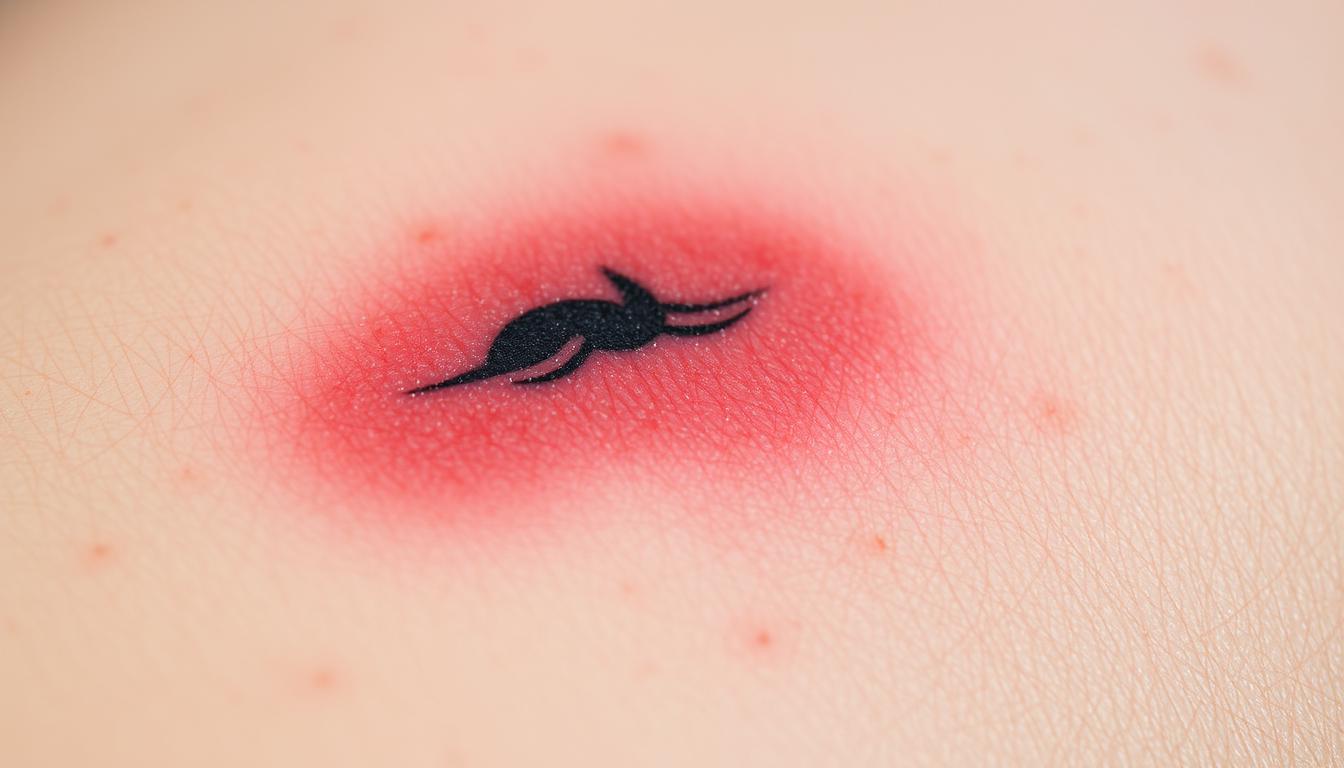
Is that nagging itch ruining your new ink? You’re not alone. Many people experience unexpected discomfort after getting body art, but understanding what’s happening beneath the surface can ease your mind—and your skin.
Fresh designs create tiny injuries as needles deposit pigment. This triggers your body’s natural healing response, which often includes redness, swelling, and yes—itching. While tempting, scratching can disrupt recovery and affect your tattoo’s appearance.
Proper aftercare routines make all the difference. Moisturizing with fragrance-free lotions helps soothe irritation. Avoid tight clothing over the area, and never pick at scabs. If the sensation becomes intense, try gently tapping the skin instead of scratching.
Most cases resolve within 2-4 weeks as the outer layers repair. However, persistent itching paired with oozing or heat might signal infection. Listen to your body—it knows when something’s off.
Key Takeaways
- Skin irritation is normal during tattoo recovery phases
- Scratching risks ink displacement and scarring
- Hydration reduces discomfort and supports healing
- Watch for unusual symptoms like pus or fever
- Aftercare habits determine long-term results
Introduction: What Causes Tattoo Itchiness?
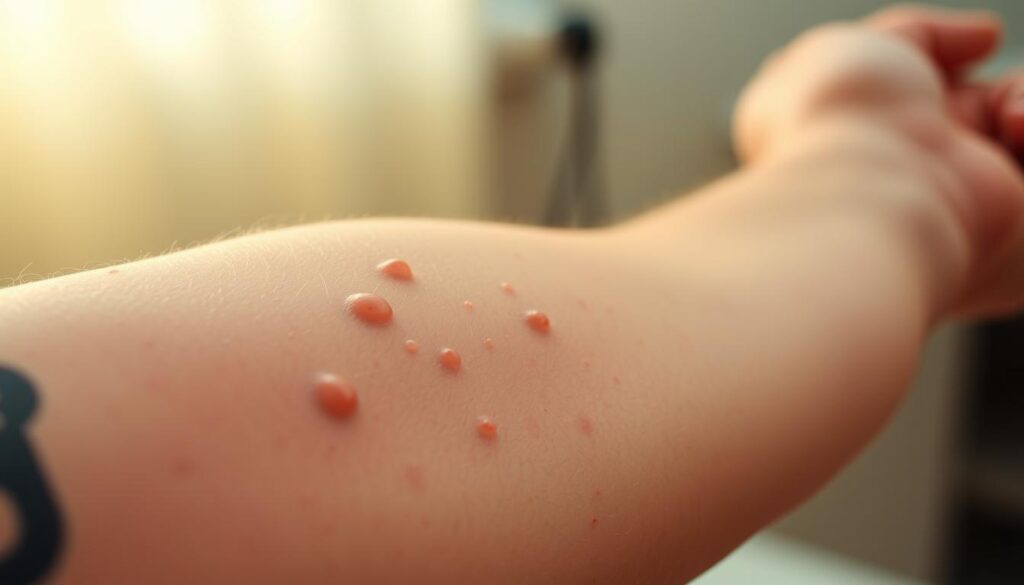
That persistent tickle on your fresh body art isn’t random—it’s science. Your skin launches a full-scale repair mission after enduring thousands of micro-injuries during the inking process.
Tattoo Itchiness Overview
Needles create microscopic channels in your skin’s surface, triggering inflammation and cell regeneration. This biological response floods the area with white blood cells and plasma—nature’s bandage for damaged tissue.
Three key factors intensify the urge to scratch:
- Histamine release from activated immune cells
- Dryness as fluids evaporate from wounded areas
- Nerve endings reacting to scab formation
Environmental elements like pollen or tight fabrics can worsen irritation. Some people develop sensitivities to specific ink pigments, especially reds and yellows. Pro tip: Hydrated skin heals faster—apply fragrance-free moisturizers 3x daily.
While mild discomfort is expected, watch for spreading redness or warm sensations. These could signal complications needing professional care. Your body’s repair system works hard to preserve both your health and your art’s vibrancy.
Understanding the Healing Process of New Tattoos
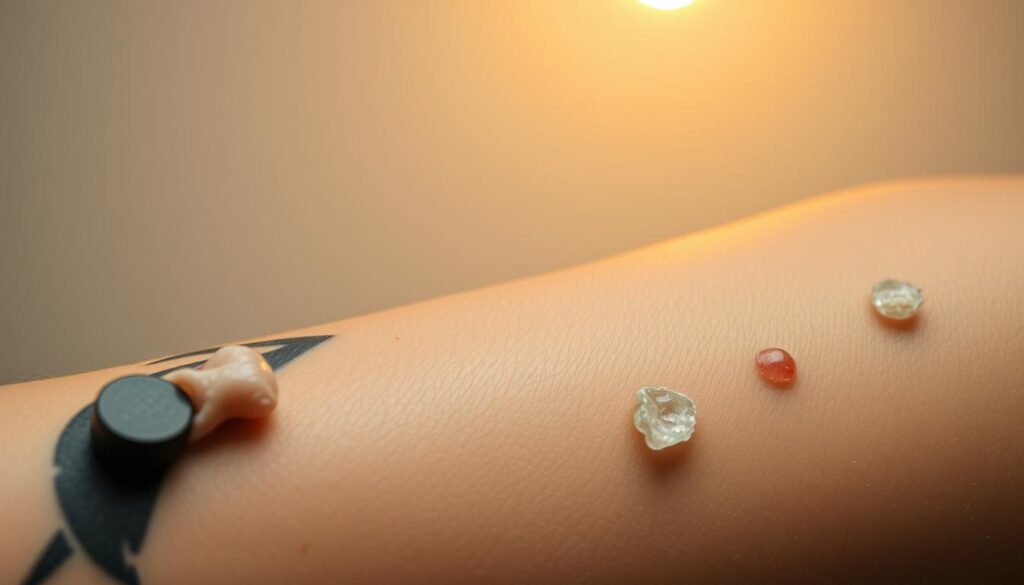
Fresh body art comes with an unexpected side effect—your skin’s intricate repair system springing into action. This biological dance transforms open wounds into vibrant designs through carefully orchestrated stages.
Normal Healing: Skin Repair and Inflammation
Needles create thousands of micro-channels in your skin’s upper layers during the inking process. Blood vessels dilate immediately, flooding the area with oxygen-rich plasma and infection-fighting white blood cells.
- Inflammation control: Swelling peaks within 48 hours as damaged cells get cleared
- Tissue rebuilding: New skin cells form under protective scabs by day 5-7
- Surface renewal: Peeling begins as fresh epidermis layers seal the design
The Role of Your Immune System
Specialized defenders called mast cells swarm the wounded area, releasing histamine to manage foreign particles. This natural response explains that familiar tingle as your body:
- Traps ink particles in the dermis
- Prevents bacterial invasions
- Regenerates collagen networks
Most discomfort diminishes within 14 days as cellular activity slows. However, proper aftercare ensures your immune system doesn’t work overtime fighting external irritants.
why is my tattoo itchy: Common Causes Uncovered
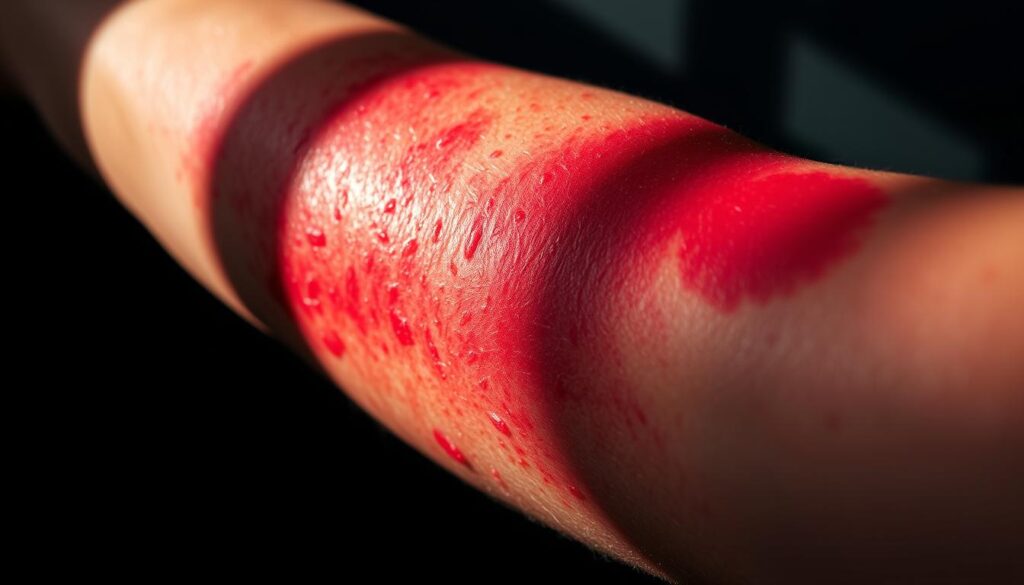
That annoying tickle on your fresh ink isn’t just random—it’s your body sounding the alarm. Multiple factors can turn your vibrant design into an itch factory, from hidden allergies to everyday environmental exposures.
When Body Art Battles Your Biology
Your skin might rebel against certain ink components long after the needle stops buzzing. Red pigments often contain mercury or iron oxides that trigger delayed hypersensitivity reactions—think itchy bumps appearing months later. The American Academy of Dermatology notes these responses can surface years post-inking.
Watch for these warning signs:
- Raised, textured areas resembling hives
- Localized swelling around colored sections
- Blisters filled with clear fluid
Everyday Elements That Aggravate Artwork
Sunlight transforms healed tattoos into irritation zones. UV rays react with ink particles, creating photosensitivity that sparks burning sensations. During healing, your compromised skin barrier amplifies this effect.
Other sneaky irritants include:
- Synthetic fabrics rubbing against fresh designs
- Low humidity drying out older tattoos
- Skincare products with alcohol or fragrances
Track when discomfort peaks—patterns reveal whether seasonal changes or specific products worsen symptoms. A sudden itch resurgence might mean your favorite wool sweater’s friction reactivated inflammation. Smart prevention beats constant scratching!
Dealing With Allergic Reactions and Infections from Tattoo Ink

Ever notice strange bumps appearing around your body art months later? Your skin might be reacting to hidden components in the pigments. While most heal smoothly, some face unexpected challenges requiring smart action.
Recognizing Ink Allergies
Red and yellow pigments often pack metallic surprises. Mercury in crimson inks or nickel in golden hues can spark delayed allergic reactions. These responses might surface weeks or years later as raised, textured patches matching specific colors.
Watch for three warning signs:
- Localized swelling only around colored areas
- Heat radiating from pigmented zones
- Blisters filled with clear fluid
Spotting Signs of Infection
Unlike gradual allergies, infections strike fast. Expanding redness creeping beyond your design’s borders signals trouble. Pus-filled bumps and fever mean Staphylococcus or other bacteria invaded during healing.
| Allergic Reaction | Infection | |
|---|---|---|
| Onset | Days to years later | 48-72 hours |
| Appearance | Color-matched bumps | Spreading redness |
| Systemic Signs | Rare | Fever/chills common |
| Treatment | Steroid creams | Antibiotics |
When your skin rebels, don’t play guessing games. A board-certified dermatologist can pinpoint whether it’s rogue ink components or harmful microbes causing havoc. Quick action preserves both your health and artwork’s integrity.
Effective Aftercare Tips for New and Old Tattoos
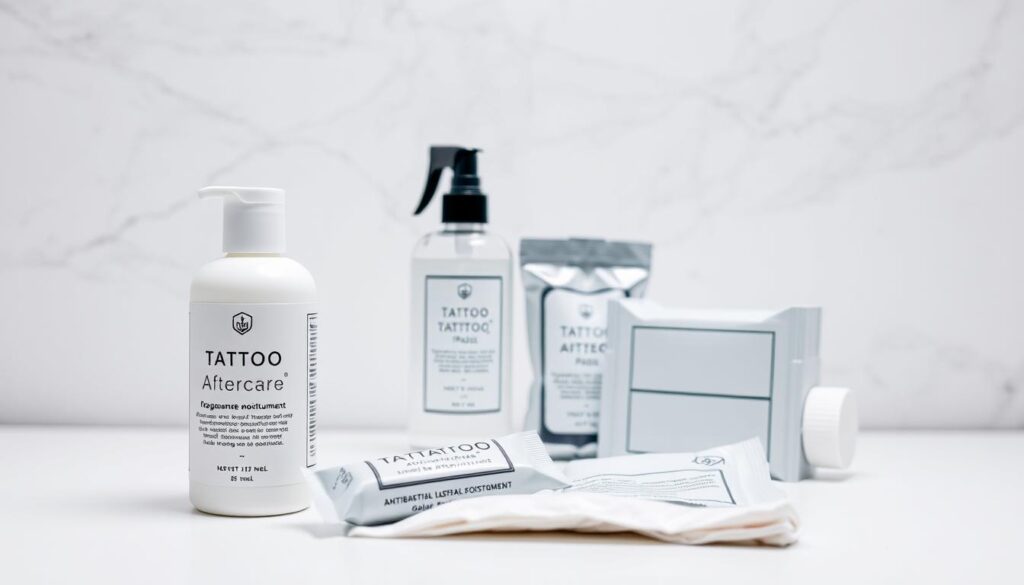
Your body art’s longevity depends on smart maintenance from day one. While fresh designs need immediate attention, older pieces require ongoing care to stay vibrant and comfortable.
Moisturizing and Cleaning Techniques
Start by consulting your tattoo artist about their preferred aftercare products. Many professionals warn against petroleum-based ointments for new tattoos, as they can trap bacteria. Instead, opt for lightweight, fragrance-free lotions that let skin breathe.
Clean the tattooed area gently with antibacterial soap twice daily. Pat dry using paper towels—cloth fibers might harbor germs. Apply moisturizer in thin layers; over-saturating slows healing.
Sun Protection and Proper Hygiene
UV rays fade colors and irritate sensitive skin. Once healed, apply broad-spectrum sunscreen (SPF 30+) before sun exposure. During initial healing, keep the area covered with loose clothing instead.
Avoid swimming pools and hot tubs for 3-4 weeks. Chlorine and bacteria disrupt healing. For older tattoos, make sure to reapply sunscreen every two hours when outdoors.
Your artist knows best—follow their timeline for resuming normal activities. Consistent care prevents fading and keeps your body art looking sharp for years.
Soothing an Itchy Tattoo: Home Remedies and Treatments
Combatting irritation requires smart solutions that work with your body’s healing process. Simple adjustments to your routine can calm discomfort while protecting your artwork’s vibrancy.
Using Cool Compresses and Topical Treatments
A chilled cloth pressed gently on the area numbs nerve endings, reducing inflammation fast. For fully healed designs, 1% hydrocortisone cream tackles persistent itching without harming pigment.
Store moisturizers in the fridge for extra cooling power. Oatmeal-based lotions soothe dry skin, while cocoa butter creates protective barriers against irritants.
Avoiding Irritants and Scratching
Skip scented products and synthetic fabrics that trap heat. If the urge to scratch strikes, tap the skin lightly instead. Loose clothing prevents friction that reignites inflammation.
Remember: Damaged designs need time. Consistent care keeps your body art looking sharp while letting healing run its course.
